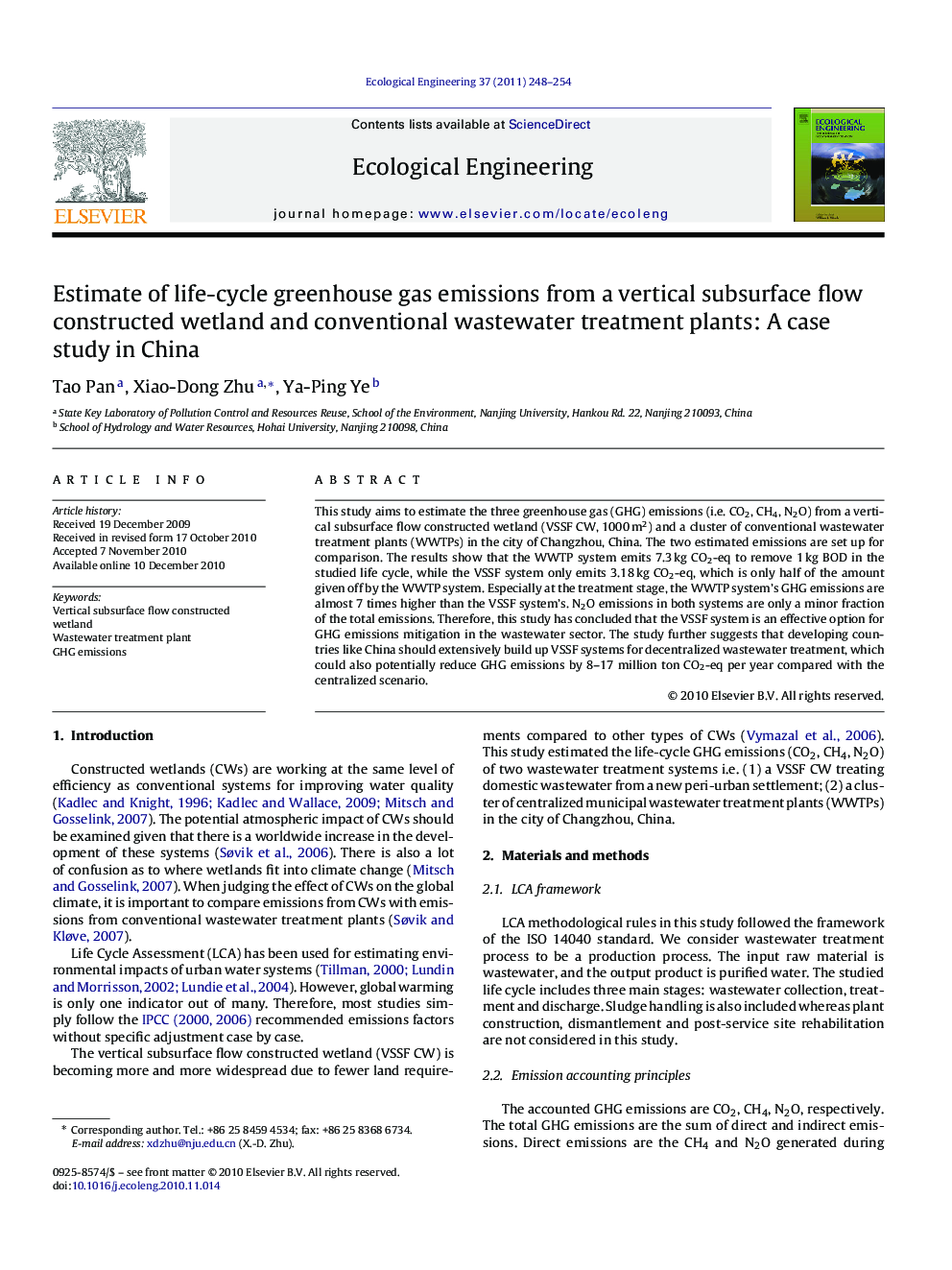| Article ID | Journal | Published Year | Pages | File Type |
|---|---|---|---|---|
| 6302842 | Ecological Engineering | 2011 | 7 Pages |
Abstract
This study aims to estimate the three greenhouse gas (GHG) emissions (i.e. CO2, CH4, N2O) from a vertical subsurface flow constructed wetland (VSSF CW, 1000Â m2) and a cluster of conventional wastewater treatment plants (WWTPs) in the city of Changzhou, China. The two estimated emissions are set up for comparison. The results show that the WWTP system emits 7.3Â kg CO2-eq to remove 1Â kg BOD in the studied life cycle, while the VSSF system only emits 3.18Â kg CO2-eq, which is only half of the amount given off by the WWTP system. Especially at the treatment stage, the WWTP system's GHG emissions are almost 7 times higher than the VSSF system's. N2O emissions in both systems are only a minor fraction of the total emissions. Therefore, this study has concluded that the VSSF system is an effective option for GHG emissions mitigation in the wastewater sector. The study further suggests that developing countries like China should extensively build up VSSF systems for decentralized wastewater treatment, which could also potentially reduce GHG emissions by 8-17 million ton CO2-eq per year compared with the centralized scenario.
Related Topics
Life Sciences
Agricultural and Biological Sciences
Ecology, Evolution, Behavior and Systematics
Authors
Tao Pan, Xiao-Dong Zhu, Ya-Ping Ye,
